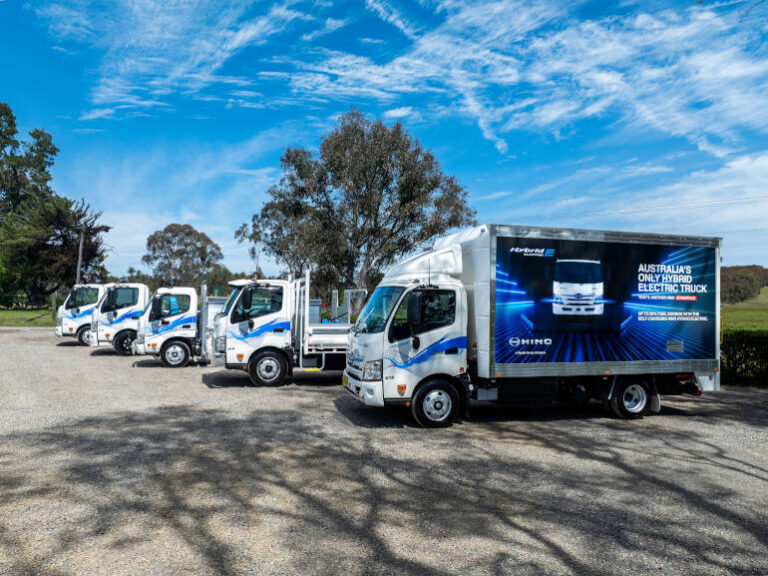Hino is doubling down on hybrid electric technology in the light-duty segment, bringing dealers back into the classroom to refresh their understanding of the 300 Series Hybrid and its benefits for customers.
When the 300 Series Hybrid was first launched during the pandemic, training was largely delivered online. Five years on, Hino has shifted to face-to-face sessions, giving sales teams a deeper understanding of how hybrid technology works and where it delivers the strongest value.
According to Hino’s Manager of Product Strategy, Daniel Petrovski, retraining was necessary to overcome early hesitations:
“Just doing product training isn’t enough for a sales team, especially when it’s a new way of thinking. Some of our more traditional salespeople initially said, ‘I’m not selling that, it’s new technology.’ After last month’s training, those same people have taken out demos and started talking confidently to customers about the benefits.”
Focusing on business outcomes
The training places a strong emphasis on fuel savings, total cost of ownership, and real-world operations rather than horsepower or technical specs. Petrovski explained that many customers don’t monitor fuel closely, but for those who do, the hybrid’s 20%+ savings are compelling.
“From month one, when you do a return-on-investment calculation, the hybrid comes out around $100 a month cheaper to operate than a diesel equivalent. Customers care about their monthly outgoings, and this is where hybrid stacks up strongly.”
Demonstrating performance in real operations
Hino reinforced the message with live demonstrations, including the “Hino 300” activity in Bathurst where hybrid trucks completed simulated delivery runs. Data collected showed significant operating cost reductions over time.
In one example, seven years of operation equated to savings of $38,000 per truck. “Multiply that by 10 trucks and you’re looking at a quarter of a million dollars saved,” Petrovski said.
Broadening applications
The retraining also showcased new applications such as electric PTO systems and “Built to Go” variants, allowing customers faster delivery of ready-made bodies like tippers and trays. These expansions highlight that hybrid trucks are not limited to niche uses but can fit into mainstream transport operations.
Building dealer confidence
Hino has already sold more than 1,200 hybrid trucks in Australia, and Petrovski believes dealer confidence will accelerate uptake.
“Every vehicle is not suitable for every customer. But when you match the hybrid to the right operation – customers focused on reducing costs, improving efficiency and meeting sustainability goals – it’s the perfect solution,” he said.
With more hybrid models and body types on the way, and dealer networks now better equipped to communicate the benefits, Hino expects hybrid sales to climb sharply in the months ahead.






